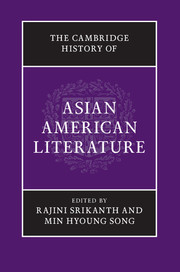Book contents
- The Cambridge History ofAsian American Literature
- The Cambridge History of Asian American Literature
- Copyright page
- Contents
- Notes on Contributors
- Introduction
- Part I Early Forms of Expression to the Start of the Twentieth Century
- Part II The Exclusion Era, World War II, and the Immediate Postwar Era
- Part III The Asian American Movement
- Part IV Canons
- Part V Post-1965 and the Twenty-First Century
- Part VI Twenty-First Century: 9/11, Empire, and Other Challenges to Literature
- Bibliography
- Index
- References
Bibliography
Published online by Cambridge University Press: 05 December 2015
- The Cambridge History ofAsian American Literature
- The Cambridge History of Asian American Literature
- Copyright page
- Contents
- Notes on Contributors
- Introduction
- Part I Early Forms of Expression to the Start of the Twentieth Century
- Part II The Exclusion Era, World War II, and the Immediate Postwar Era
- Part III The Asian American Movement
- Part IV Canons
- Part V Post-1965 and the Twenty-First Century
- Part VI Twenty-First Century: 9/11, Empire, and Other Challenges to Literature
- Bibliography
- Index
- References
Keywords
- Type
- Chapter
- Information
- The Cambridge History of Asian American Literature , pp. 583 - 622Publisher: Cambridge University PressPrint publication year: 2015



